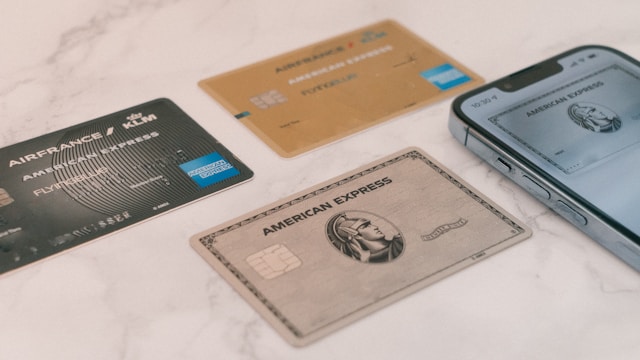Debt is often described as a burden, a shadow looming over one’s financial freedom and peace of mind. It can come from various sources—student loans, credit cards, mortgages, or personal loans. While tackling debt can seem daunting, employing clever strategies can make the process more manageable and even empowering. In this article, we’ll explore five innovative and practical ways to crush your debt, helping you regain control of your finances and pave the way to a debt-free future.
1. Leverage the Snowball Method
The Snowball Method is a popular and effective strategy for debt repayment. It involves focusing on paying off your smallest debt first, while making minimum payments on the others. Once the smallest debt is eliminated, you move on to the next smallest, and so on. Here’s why this method is powerful:
- Psychological Boost: Paying off the smallest debt first provides a sense of accomplishment and momentum. This psychological boost can keep you motivated to tackle larger debts.
- Focused Strategy: By concentrating on one debt at a time, you reduce the complexity of managing multiple payments and create a clearer path to becoming debt-free.
How to Implement the Snowball Method:
- List Your Debts: Write down all your debts from smallest to largest, excluding the interest rates for now.
- Create a Budget: Allocate as much extra money as possible toward the smallest debt while making minimum payments on the others.
- Pay Off the Smallest Debt: Once the smallest debt is paid off, move to the next one on the list, applying the money you were using for the first debt to this next one.
- Repeat: Continue this process until all your debts are eliminated.
Example: Imagine you have three debts: $500 credit card balance, $2,000 medical bill, and $5,000 car loan. Focus all your extra payments on the $500 credit card. Once it’s paid off, apply those payments to the $2,000 medical bill, and then to the $5,000 car loan.
2. Utilize the Avalanche Method
The Avalanche Method is another powerful approach, differing from the Snowball Method primarily in its focus on interest rates. This method prioritizes paying off debts with the highest interest rates first. Here’s why it works:
- Interest Savings: By targeting high-interest debts, you reduce the total amount of interest paid over time, which can save you a significant amount of money.
- Faster Payoff: As you pay off high-interest debts first, you often reduce the overall balance more quickly, which can accelerate the process of eliminating your debt.
How to Implement the Avalanche Method:
- List Your Debts: Arrange your debts from highest to lowest interest rate.
- Create a Budget: Allocate extra funds to the debt with the highest interest rate, while continuing to make minimum payments on others.
- Pay Off the Highest Interest Debt: Once the highest-interest debt is paid off, shift your focus to the next highest interest debt.
- Repeat: Continue this process until all debts are paid.
Example: Suppose you have credit card debt with 20% interest, a personal loan with 15%, and a student loan with 5%. Start by paying off the credit card debt first. Once it’s cleared, apply the payments to the personal loan, and then tackle the student loan.
3. Negotiate Your Interest Rates
Negotiating lower interest rates can significantly impact your debt repayment strategy. Credit card companies and lenders may be willing to work with you if you ask. Here’s how to negotiate effectively:
- Research: Understand your credit score and current interest rates. Use this information to make a strong case for a lower rate.
- Be Proactive: Contact your creditors directly. Be polite but firm in your request for a lower interest rate, highlighting your loyalty or good payment history.
Steps to Negotiate Your Interest Rates:
- Gather Information: Know your current rates, and research lower rates available to others with similar credit profiles.
- Contact Your Creditors: Call or send a written request to your creditors. Explain your situation and request a reduction.
- Offer Alternatives: If they’re unwilling to lower your rate, consider asking for other concessions, such as a temporary payment plan or fee waivers.
- Consider Balance Transfers: If negotiating fails, consider transferring high-interest balances to a credit card with a lower rate or an introductory 0% APR.
Example: If you’re paying 18% on a credit card and you’ve maintained a good payment history, you might be able to negotiate it down to 15% or lower. This reduction can save you hundreds of dollars in interest.
4. Use a Debt Consolidation Loan
A debt consolidation loan can simplify your finances by combining multiple debts into one loan with a potentially lower interest rate. This method can streamline payments and often reduce the total interest paid. Here’s how to effectively use debt consolidation:
- Assess Your Debts: Determine if consolidating your debts will reduce your overall interest rate and monthly payments.
- Shop for the Best Rates: Compare rates from different lenders, including personal loans, balance transfer credit cards, or home equity lines of credit.
How to Implement Debt Consolidation:
- Evaluate Your Debts: Calculate the total debt amount and compare the interest rates.
- Choose a Consolidation Option: Decide between a personal loan, balance transfer credit card, or home equity loan.
- Apply for a Loan: Obtain a loan with a lower interest rate than your current debts.
- Pay Off Debts: Use the loan proceeds to pay off existing debts.
- Manage Your Payments: Make consistent, on-time payments on the consolidation loan.
Example: If you have three credit cards with varying interest rates, consolidating them into a single personal loan with a lower interest rate can reduce your overall payments and simplify your monthly budgeting.
5. Adopt the 50/30/20 Budget Rule
The 50/30/20 budget rule is a simple yet effective framework for managing your finances and making debt repayment more manageable. It divides your income into three main categories:
- 50% Needs: Allocate half of your income to essential expenses such as housing, utilities, and groceries.
- 30% Wants: Reserve 30% for non-essential expenses like dining out, entertainment, and hobbies.
- 20% Savings and Debt Repayment: Use the remaining 20% to build savings and aggressively pay down debt.
How to Implement the 50/30/20 Budget Rule:
- Determine Your Income: Calculate your total monthly income after taxes.
- Categorize Expenses: Track and categorize your expenses into needs, wants, and savings/debt repayment.
- Adjust Your Spending: Modify your spending habits to align with the 50/30/20 rule.
- Prioritize Debt Repayment: Use the 20% allocated for savings and debt repayment to focus on eliminating debt.
Example: If you earn $3,000 per month, allocate $1,500 for needs, $900 for wants, and $600 for savings and debt repayment. The $600 can be used to pay off debt more aggressively or to build an emergency fund.
Conclusion
Crushing your debt requires a combination of strategic planning, disciplined budgeting, and proactive measures. By implementing the Snowball Method or Avalanche Method, negotiating interest rates, using debt consolidation, and adhering to the 50/30/20 budget rule, you can create a robust plan to tackle and eliminate your debt. Each of these strategies offers unique benefits and can be tailored to fit your personal financial situation.
Ultimately, the key to financial freedom lies in consistent effort and smart management. Start by choosing the methods that resonate most with your goals and financial situation, and gradually incorporate them into your financial routine. With persistence and dedication, you can conquer your debt and achieve the peace of mind that comes with financial stability.



